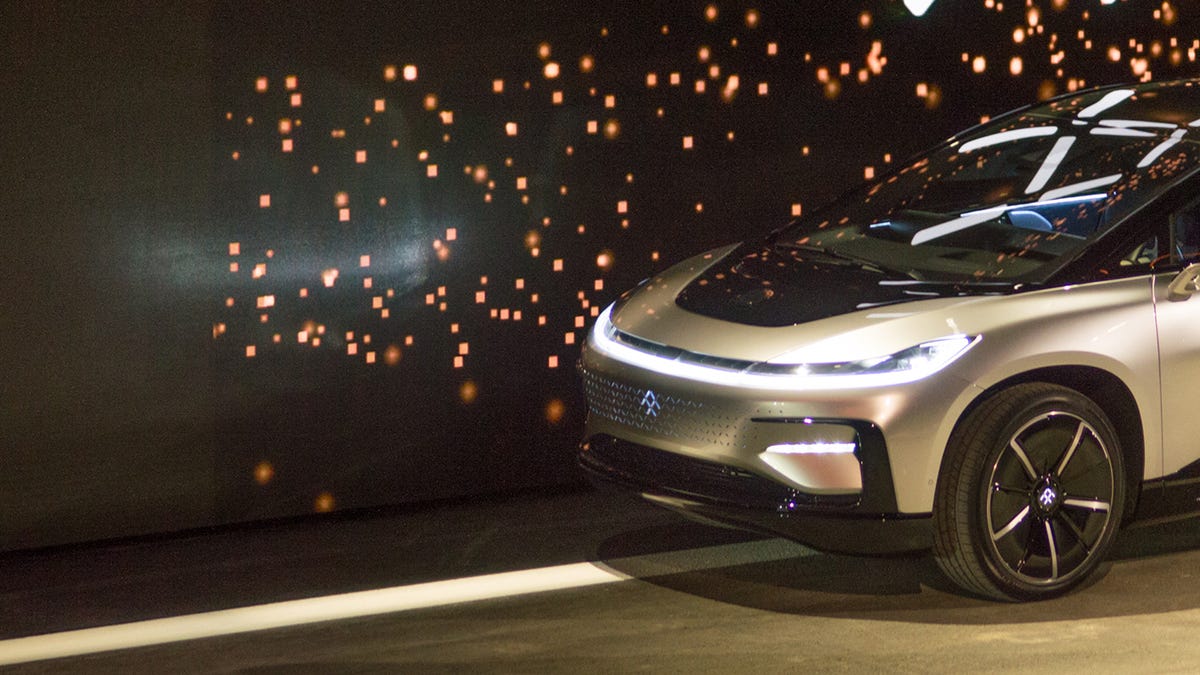Faraday Future reportedly gets realistic, scales back ambitions a tad
The best way to eat an elephant, after all, is one bite at a time.

It's been an up-and-down year for Faraday Future so far, and new reports of its factory's push toward completion keeps the waters nice and murky for the next little while, at least.
Faraday Future is planning to scale down two large portions of its future presence in the auto industry, Reuters reports. First, it will reduce its product portfolio from seven vehicles to two. Second, it will shrink its planned facility in Nevada from 3 million to just 650,000 square feet, expanding as required in the future.
The FF 91 is technologically impressive, but deliveries aren't scheduled until 2018 at the earliest, and its planned assembly location is still a flat piece of earth as of this writing.
The EV startup began this year on a strong note, showing the world its FF 91 flagship model at the CES trade show in Las Vegas. It promised Tesla-trumping acceleration and advanced autonomous driving and parking features. Despite some valid concerns, the reception seemed generally positive.
Less than a month later, the automaker was slapped with a lawsuit alleging unpaid bills upward of $1 million, linked to its CES unveiling. Faraday placed the blame on the plaintiff, and it's likely to result in a long court case.
CES bit back in other ways. Preparing for the trade show and the FF 91's grand unveiling cost the company a good deal of money -- so much so, it's believed, that Faraday had to put its Nevada factory plans on the back burner in order to scrounge up the scratch. Despite the backing of a Chinese billionaire, most of Faraday's woes allegedly deal with cash-flow problems.
Faraday Future did not immediately comment on the product-portfolio report, but it did confirm that it's taking a multistage approach to building out its manufacturing. A Faraday Future spokesperson's full statement can be read below:
As part of a long-term development plan to bring manufacturing facilities online at a steady pace, Faraday Future is moving forward with a multi-stage manufacturing strategy at APEX North Las Vegas.
The initial phase of our Stage 1 Manufacturing Project, which included mass grading, was completed at the entire factory construction site last November. We will soon embark on the second phase of Stage 1 Manufacturing Project, which will include the construction of an additional facility on site.
We expect planning, engineering, and construction of this Stage 1 Manufacturing Project to proceed rapidly so that we can bring our flagship vehicle, the FF 91, to production more quickly. At a later date, this Stage 1 Manufacturing Project will be integrated into the Stage 2 Manufacturing Project, which is scheduled to start construction later this year.
Faraday Future aim to deliver our first production vehicles in 2018, and remain committed to the State of Nevada and our $1B investment in the region over the next few years.
Both moves reported by Reuters are logical, given the above. Stretching cash in order to deliver something -- anything, to be honest -- by taking a slower, more metered approach shows that Faraday is committed to fulfilling its promises despite not swimming in money like Scrooge McDuck and his vault full of coins.
It's a move not dissimilar to that of Tesla. Tesla has never been shy to admit that its slow approach to growing its EV empire starts with selling high-priced models to bring in that early-adopter money, at which point it will pivot and begin selling more affordable vehicles.
That's the case with the Model S and the Model 3, the latter of which is slated to begin production later this year.

